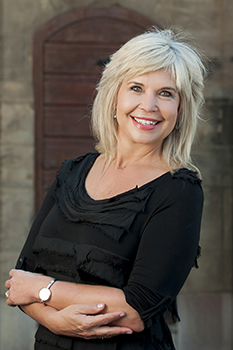
Dr Denine Smit
Photo: Supplied
Two law scholars, Dr Denine Smit and Dr Damian Viviers, from the Faculty of Law at the University of the Free State (UFS) recently launched a book titled Vulnerable Employees, which was inspired by their interest in researching, creating awareness and providing a legal exposition in relation to employees who are vulnerable and experience prejudice and dignity violations in the workplace. These include workplace bullying, appearance-based discrimination, those who are gender fluid or have mental-health conditions.
“Dr Viviers, who is also a former student of mine, and I, have been working together for years and share a common understanding in relation to our various topics of interest. We often share the same train of thought. This is how we came to work together to produce this book,” said Dr Smit.
Research focused on employee challenges in the workplace
The book expands on the field of knowledge regarding certain categories of employees who, as a consequence of various mutable, immutable and semi-immutable characteristics, as well as behavioural experiences, are rendered vulnerable in their employment relationships. The book draws on various social, psychological and other empirical considerations, as well as comparative legal research from foreign and international law, in order to expand on the legal position under the South African legal framework governing these conditions. While the book first and foremost constitutes a compendium of research to be used for this purpose, it also serves as a practical guide for all legal practitioners, human resources managers, other labour stakeholders and the judiciary.
Book draws strength in other academic fields
Vulnerable Employees was launched on 28 July 2017 at the UFS library, to an audience of academics and students, with a panel discussion made up of the authors and two other panellists. One of the panellists was Dr Katinka Botha, a leading psychiatrist in the Free State who has a wealth of experience in this field. “Her selection as a panellist was motivated by the various significant inter-disciplinary considerations and intersections between psychology, psychiatry and law, contained in the book,” said Dr Smit.
“Dr Botha’s expertise was invaluable in shedding light on mental-health considerations during the panel discussion.”
Mr Lesley Mokgoro, the other panellist, is a leading labour law practitioner, as well as director and head of the Dispute Resolution Practice Group at Phatshoane Henney Attorneys. “His years of experience working with all role players in the employment domain, as well as his extensive legal knowledge and expertise, made him uniquely qualified to serve on the panel and deliver an opinion of the practical and academic value of the book,” said Dr Smit.
Workplace policies key to securing employee rights
There are a number of growing trends in the workplace that could shape the practice of labour law or workplace policies. Dr Smit said the need for employers to regulate workplace culture, particularly in relation to bullying, harassment and unfair discrimination, in line with the South African legal framework, was a fundamental need in all workplaces. Effective workplace policies may be used to clearly outline the relevant “dos and don’ts” to employees, as well as the procedures and processes that may be followed in order to address such conduct. Workplace policies serve to advance legal certainty and efficiency, since the rights and obligations of all role players are clearly demarcated, or should be, in terms of a well-drafted and considered policy.
The book is one of several publications produced by Dr Smit in collaboration with Dr Viviers on the topic of workplace discrimination and the law. The two scholars are working on another book to be published at the end of 2017.